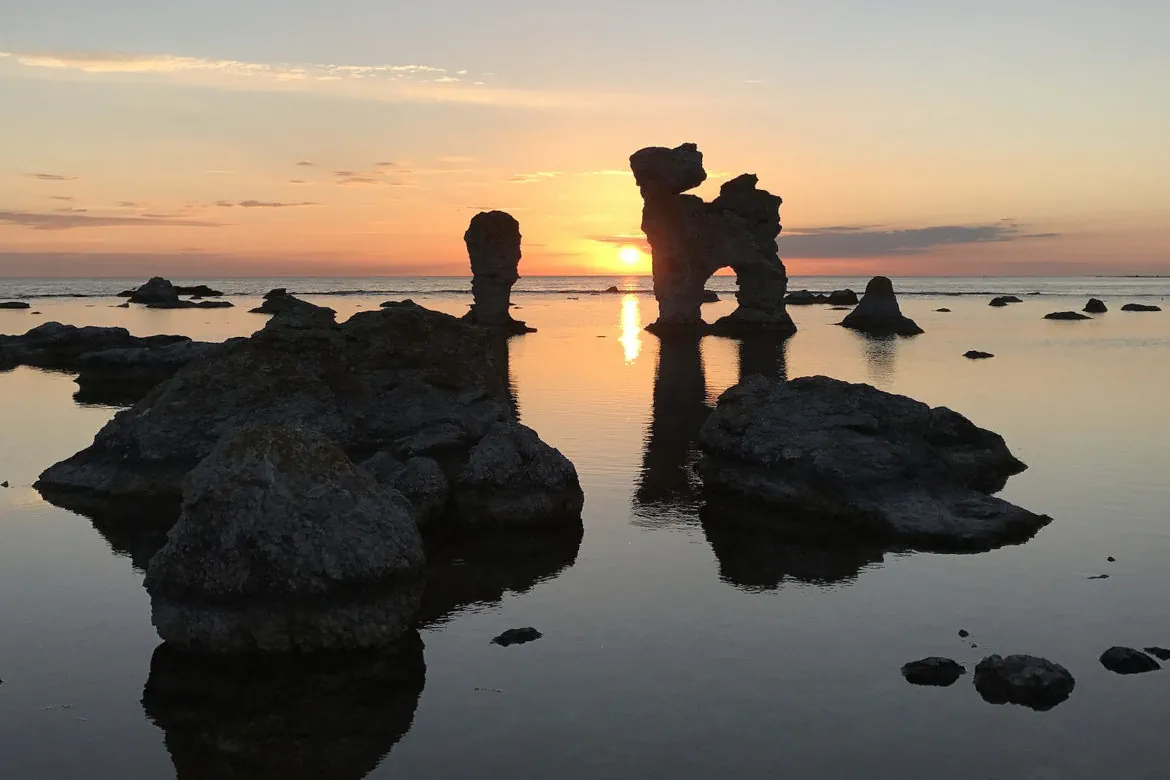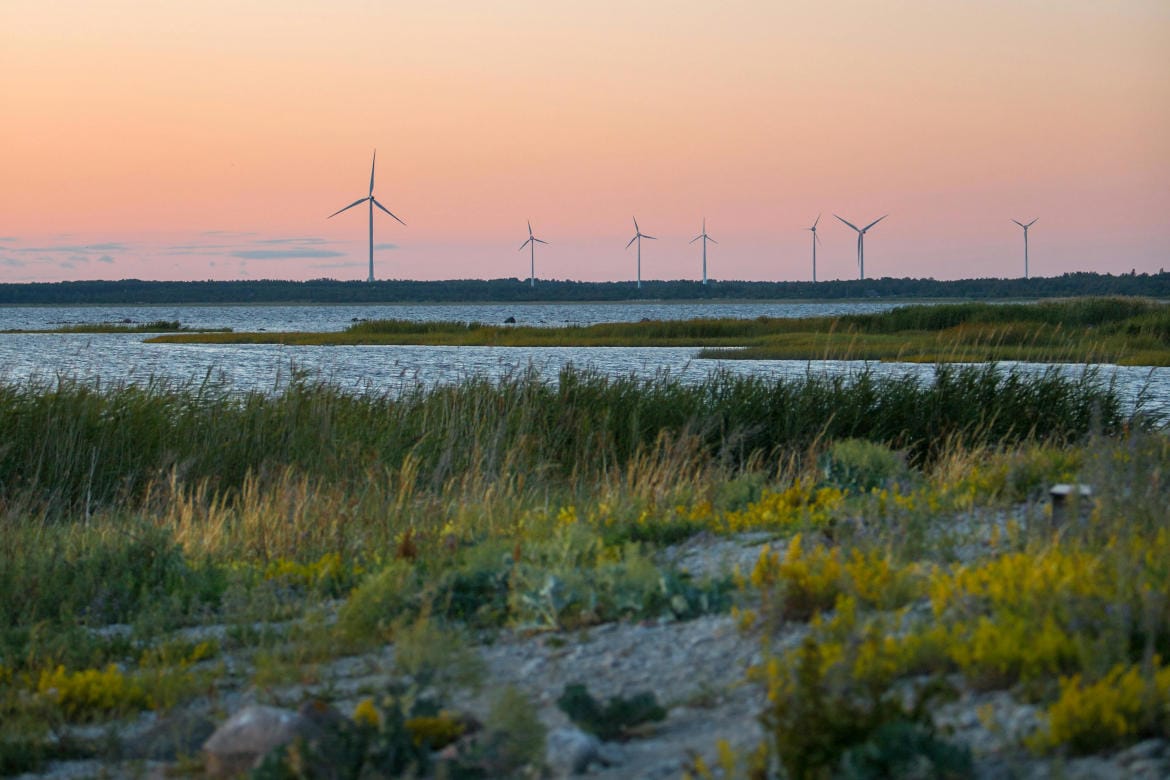The Baltic Sea, nestled between the Scandinavian Peninsula, mainland Europe, and the Baltic states, is home to a number of fascinating islands. This semi-enclosed body of water is known for its diverse cultures, rich history, and scenic landscapes. Among its many islands, some stand out due to their size and significance.
Below is a guide to the seven largest islands in the Baltic Sea, each offering a unique insight into the region’s rich natural beauty and cultural heritage.
Table of Contents
7 Largest Baltic Sea Islands
| Rank | Island | Country | Area |
|---|---|---|---|
| 1 | Zealand | Denmark | 7,031 sq km (2,715 sq mi) |
| 2 | Gotland | Sweden | 3,184 sq km (1,229 sq mi) |
| 3 | Funen | Denmark | 2,984 sq km (1,152 sq mi) |
| 4 | Saaremaa | Estonia | 2,674 sq km (1,032 sq mi) |
| 5 | Öland | Sweden | 1,342 sq km (518 sq mi) |
| 6 | Lolland | Denmark | 1,243 sq km (480 sq mi) |
| 7 | Hiiumaa | Estonia | 989 sq km (382 sq mi) |
1. Zealand
Zealand, or Sjælland in Danish, is the largest island in the Baltic Sea, covering an area of around 7,031 square kilometers (2,715 square miles). It is part of Denmark and home to the country’s capital, Copenhagen, which lies on the island’s eastern coast.
Zealand’s landscape is a mix of forests, farmlands, and rolling hills. The island also hosts Denmark’s highest population, with over 2 million inhabitants. Historically, it has been a crucial cultural and political center of Scandinavia.
Copenhagen, along with other cities like Roskilde and Helsingør, is rich in history, boasting landmarks such as the impressive Christiansborg Palace and the historic Nyhavn waterfront.
In Helsingør, visitors can explore Kronborg Castle, a UNESCO World Heritage Site, known for its connection to Shakespeare’s Hamlet. Roskilde is home to its iconic cathedral, also a UNESCO World Heritage Site, reflecting the island’s deep historical roots. The island’s cities offer a blend of cultural attractions, historical significance, and vibrant urban life.
2. Gotland
Gotland is the second-largest island in the Baltic Sea, covering an area of around 3,184 square kilometers (1,229 square miles). It belongs to Sweden and sits roughly 90 kilometers (51 miles) east of the Swedish mainland.
Known for its medieval history, Gotland is home to the city of Visby, a UNESCO World Heritage Site, famed for its well-preserved town walls and historic buildings.

Discover Gotland: Sweden’s Largest Island
Gotland is more than just Sweden’s largest island; it’s a cultural and natural gem that offers something for every traveler.
The island boasts limestone cliffs, sandy beaches, and rich archaeological sites dating back to the Viking Age.
Gotland’s flora and fauna reflect its temperate climate, with pine forests and rare species of orchids being part of its natural charm. The island is also known for its artistic community, with many galleries and workshops showcasing local crafts and artworks.
3. Funen
Funen, known as Fyn in Danish, is Denmark’s third-largest island, spanning approximately 2,984 square kilometers (1,152 square miles). Located between the mainland and Zealand, Funen is connected to both via bridges, including the famous Great Belt Bridge.
The island is often referred to as the “Garden of Denmark” due to its fertile soil, rolling hills, and orchards. Funen is home to the city of Odense, the birthplace of famed author Hans Christian Andersen.
The island’s cultural landscape includes historic castles, such as Egeskov Castle, and charming villages that give a glimpse into Denmark’s past.
Funen’s coastline features sandy beaches, making it a popular summer destination. The island is also known for its picturesque coastal landscapes, with charming seaside towns and scenic walking trails that offer stunning views of the Baltic Sea.
4. Saaremaa
Saaremaa, Estonia’s largest island, spans around 2,674 square kilometers (1,032 square miles) and lies in the Baltic Sea to the west of the Estonian mainland.
Known for its tranquil nature and well-preserved medieval architecture, the island offers a mix of pristine landscapes and cultural landmarks.

Discover Saaremaa: Estonia’s Largest Island
The largest island in Estonia is a popular destination for nature lovers and history enthusiasts alike.
Saaremaa’s most notable feature is Kuressaare Castle, a 14th-century fortress that now houses a museum.
The island’s diverse natural attractions include the Kaali meteorite crater, one of the few meteorite craters in Europe, and extensive coastal meadows that are perfect for birdwatching.
Saaremaa is also famous for its traditional windmills, juniper groves, and local crafts, which reflect a strong connection to its cultural heritage.
5. Öland
Öland is Sweden’s second-largest island, covering approximately 1,342 square kilometers (518 square miles). Located to the east of the mainland, it is connected by a long bridge to the city of Kalmar.
The island is a popular summer destination known for its diverse landscape, which includes sandy beaches, vast forests, and unique limestone formations called “alvars.”
Its UNESCO-listed agricultural landscape of southern Öland reflects centuries of human habitation and farming practices.
Öland’s rich biodiversity includes rare birds and wildflowers, making it a prime spot for nature lovers. The island also has a rich history, with several Iron Age forts and prehistoric sites dotting the landscape.
6. Lolland
Lolland is one of Denmark‘s largest islands, covering an area of around 1,243 square kilometers (480 square miles). It lies to the south of Zealand and is part of Denmark’s archipelago.
Known as the “pancake island” due to its flat terrain, Lolland is predominantly agricultural, with fertile soil that supports vast farms producing sugar beets and other crops.
The island is also home to several historic estates and manors, many of which are open to the public.
In addition to its agricultural heritage, Lolland is known for its natural beauty, including several bird sanctuaries and nature reserves. The island has also become a hub for renewable energy projects, particularly wind farms.
7. Hiiumaa
Hiiumaa, the second-largest island in Estonia, has an area of 989 square kilometers (382 square miles). Located just north of Saaremaa, it is known for its serene, untouched nature.
This island is an ideal destination for those interested in outdoor activities, such as hiking and cycling, thanks to its extensive forests, bogs, and coastline. It is also home to one of the oldest lighthouses in the world, Kõpu Lighthouse, which dates back to the early 16th century.
Hiiumaa has a rich maritime history, with shipbuilding and fishing being traditional industries on the island. Today, the island is also recognized for its eco-friendly tourism initiatives, preserving its natural beauty while welcoming visitors to explore its landscapes.
